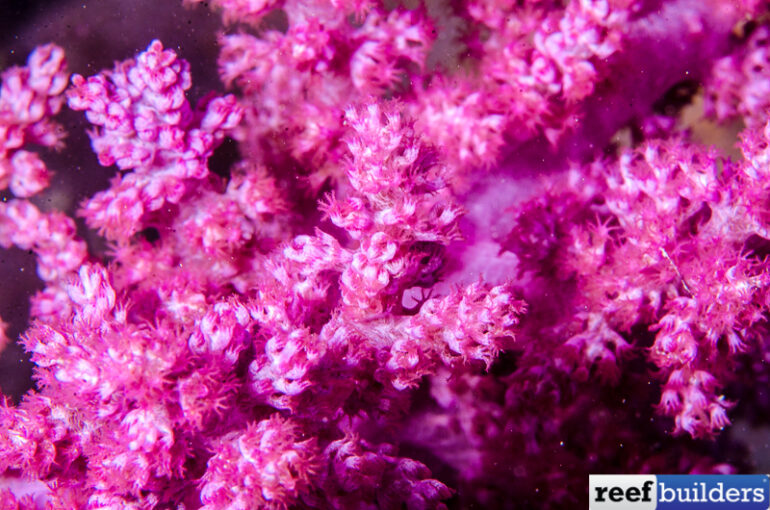Soft corals don’t get the attention they deserve. Maybe because they are considered beginner corals, maybe because they are not as colorful as hard corals but there are some notable exception to that. Let us guide you through one of the very colorful and still photosynthetic members of this family.
Soft corals are for Beginners? Not really . . .
Before we start, let’s clear up that when we talk about ‘soft corals’ we don’t mean zoanthids, corallimorphs, star polyps, clove polyps, shrooms etc. but reserve that term more specifically for the toadstool, devil’s hand and branching soft corals. Yes some soft corals are easy to keep, yes most soft corals are not as colorful as hard corals. BUT some exceptions exist, and some particular species such as the Yellow ‘Fiji’ toadstool leather, Palau green Nephthea, or Green spaghetti leather are as colorful as any hard corals.
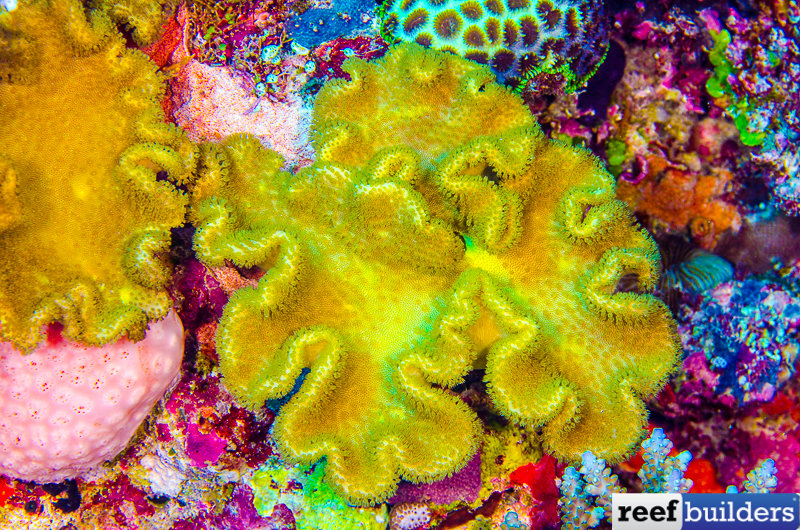
Plus, and this is the BIG plus, soft corals do particularly well, in tanks with a lot of coral eating fishes, such as Butterflyfish or Angelfish. Now we have the opportunity to have a colorful soft coral tank, with plenty of colorful fishes.
Pink Nephthya used to come only from Japan
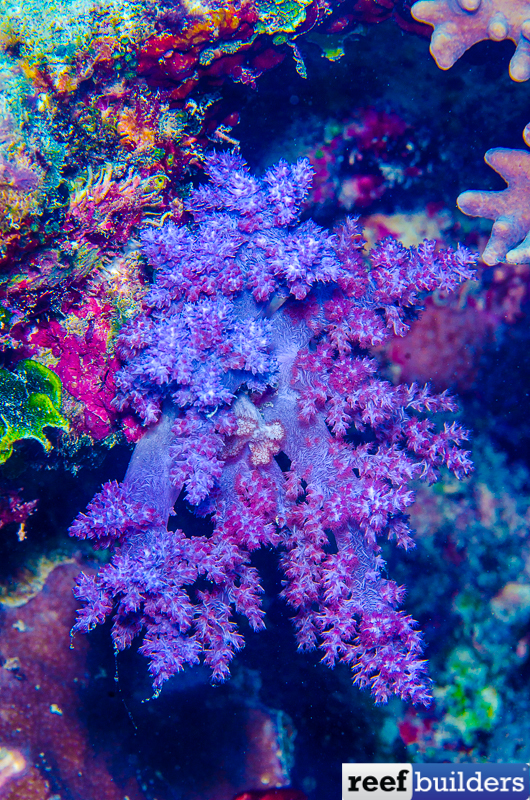
UCA collects pink Nephthya from the Great Barrier Reef, but this particular corals came in the US from Japan in very small quantities. This corals used to be known only from Okinawa in the south of Japan, even though some were also spotted from Fiji, but never really imported.
This species host Symbiotic algae!
Even though we could feel this coral belong to the family of brightly colored classic Strawberry coral (Scleronephthya sp or Dendronephthya sp) that don’t host any zooxanthellae and need a constant food source. Which is very difficult to achieve in aquarium and make their maintenance very complicated. However this pink soft coral is from the Nephthea genus, and it does host Symbiotic algae so its maintenance is easy.
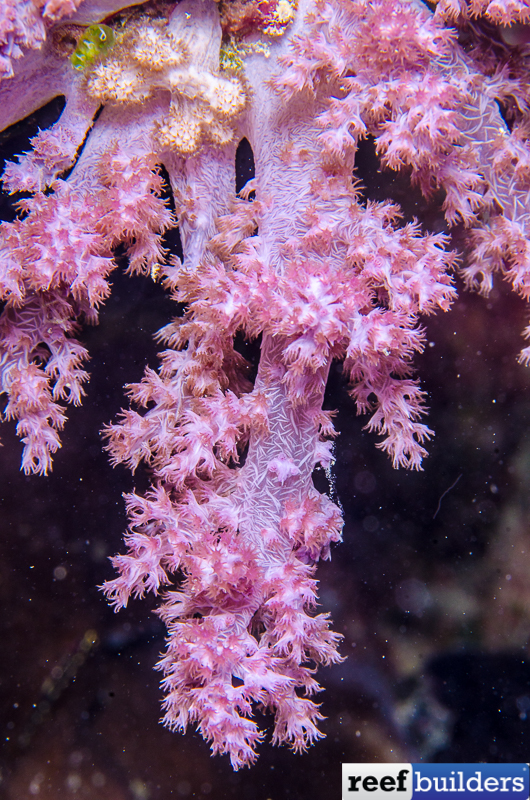
Appearance:
The Pink Nephthya is a bushy, compact, branching soft coral. It has small calcium spikes to give it support called ‘sclerites’, and in this species they are small and short, in high density. The sclerites don’t project beyond the polyp when closed.Which gives it a very rough but not spiny appearance, like a very small grain sandpaper.
Underwater this coral may appear blue grey. And some of them are actually light pink when properly illuminated. But some other are bright pink, almost purple when they are properly lighted.
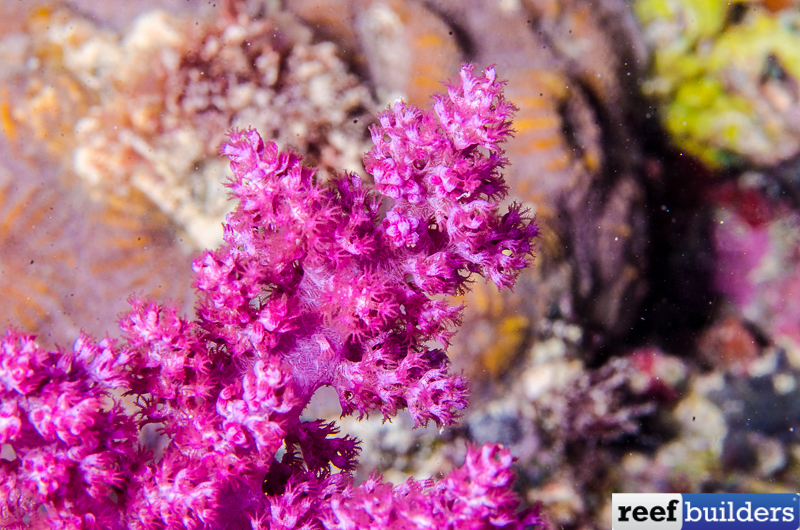
What kind of habitat?
The Pink Nephthya lives in shallow, inshore turbid reefs of the great barrier reef within exposed lagoons, in spots that get a high tidal flow. We usually find it in highly exposed, quite turbid water, usually above 45 ft (15 m) of water. It prefer spot where it will receive a constant flow, that will bring all the food needed. So they usually stick out of the reef, above other corals, or on their side. They also colonize parts of channels, reef cracks, where the flow and food is concentrated and flushes through.
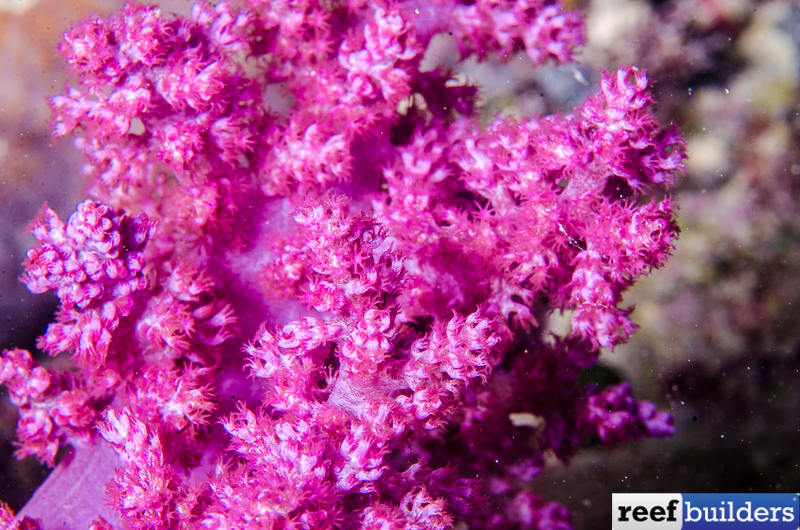
The fact that it can survive on the products of its zooxanthellae, doesn’t mean it doesn’t need to be fed. It actually does need quite a lot of feeding if we actually want it to grow. To achieve this, it needs descent flow, as the polyps won’t open properly if the flow is not strong enough. If it’s too strong it will close and shrink. They enjoy feeding on small particle, and prefer phytoplankton over larger zooplankton.
What kind of Aquarium for it?
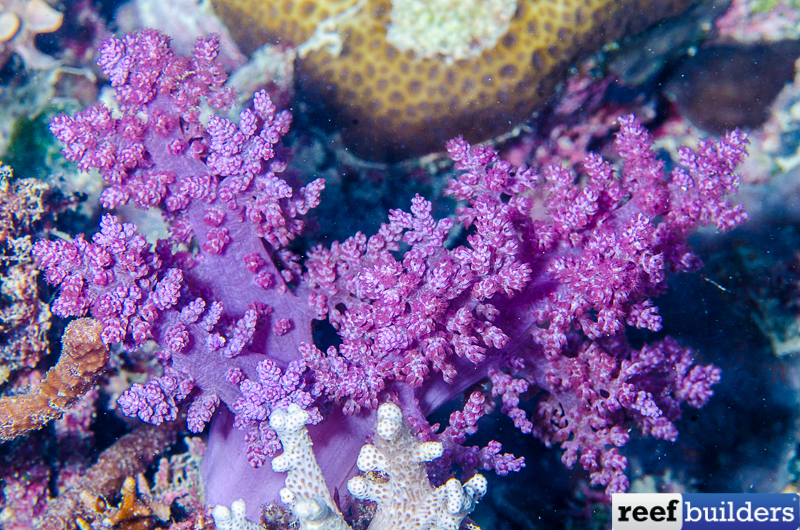
As I said earlier a dedicated soft corals, angel and butterflyfishes is probably the best bet. But because it lives in brightly illuminated with high flow water, a SPS tank would also work very well because it looks great but won’t overgrow everything the way other softies might.
It would add some movement to a pretty motionless SPS tank. Plus this pink color is not that regular among SPS, apart from Birdnest and Stylos. So the best for it would be high intensity lighting, with some warm white light to compliment the blue spectrum otherwise it will look blueish or grey. So it ships poorly, may be it’s a reason peoples don’t dare to import them. But as most soft corals, they grow pretty fast, and culturing them is pretty easy, so I’m sure these will become more available in the near future.


